SPECIAL REPORT : Part 408
In terms of the Ceasefire Agreement (CFA) arranged by Norway in Feb 2002, Sri Lanka suspended the Prevention of Terrorism Act (PTA). The then Premier Ranil Wickremesinghe went ahead with the controversial move, though some sections of the armed forces, and the police, opposed the move. Let me reproduce the relevant section from the CFA: 2:12: The parties agree that search operations and arrests under the Prevention of Terrorism Act shall not take place. Arrests shall be conducted under the due process of law in accordance with the Criminal Procedure Law.” The CFA failed to take concerns of the armed forces into consideration. Those who bent backwards to appease the LTTE neglected national security. The Yahapalana government sought to replace the PTA with a new antiterrorism act. Now, the HRCSL has gone further. It wants to do
away with the PTA. Well over a decade after the elimination of the LTTE, the threat of terrorism remains, though the enemy will never regain a conventional fighting capability. But those wielding
political power have to be cautious. Let us not grant something
the enemy couldn’t win militarily.
By Shamindra Ferdinando
Political weekly ‘Anidda’, on its front-page (Feb 20, 2022 edition), carried a photograph of Archbishop of Colombo Rt. Rev. Malcolm Cardinal Ranjith signing a petition demanding the abolition of the Prevention of Terrorism Act (PTA). Standing next to the Archbishop was Tamil National Alliance’s (TNA) Batticaloa district lawmaker Shanakiyan Rasamanikkam.
According to ‘Annida,’ the high profile signature campaign against the PTA has been spearheaded by the ‘Justice for All’ organisation.
The Archbishop signed the petition before the launch of ‘Thitha’ at the BMICH by Rev. Father Lal Pushpadeva Fernando on behalf of the Catholic Church. The editorial board comprised Maximus Linton Fernando, Dr. Sachitha Mendis and Ajith Mendis. The Catholic Bishops’ Conference in Sri Lanka assailed the current dispensation with the focus on Attorney General Sanjay Rajaratnam and the Attorney General’s Department over the handling of the 2019 Easter Sunday case.
Although absolutely no reference was made at the book launch pertaining to the acquittal and release of the then Secretary Ministry of Defence Hemasiri Fernando and IGP Pujith Jayasundera charged over the Easter Sunday carnage, to be fair by Rajaratnam, the public shouldn’t forget that the indictments were filed by former AG Dappula de Livera, PC. So will Hemasiri and Pujith go scot-free because of the bungling by the Attorney General’s Department?
The Church owed an explanation as regards its backing for the ‘Justice for All’ project meant to pressure the government to repeal the PTA. The project got underway opposite the Fort Railway station early last week with the participation of several political parties, including the TNA and the Sri Lanka Muslim Congress. Among those who signed the petition were TNA Jaffna district lawmaker M.A. Sumanthiran, PC and SLMC leader Rauff Hakeem.
Can Sri Lanka do away with anti-terrorism laws? The Easter Sunday carnage, perpetrated by the National Thowheed Jamaat (NTJ) in April 2019, a decade after the eradication of the Liberation Tigers of Tamil Eelam (LTTE), underscored the importance of anti-terrorism laws. Sri Lanka cannot, under any circumstances, ignore the constant threats posed by various extremist /terrorist organisations. The devastating NTJ terror project underscored the responsibility on the part of the government to ensure an adequate legal cover for anti-terrorist operations. Unfortunately, political parties here seemed to have treated national security just as a another political issue. Western powers have exploited the political party system and the civil society setup here to advance their cause. The PTA has become an ideal issue for the Western powers to hammer this country, even though countries like the USA and the UK have some of the most draconian laws to fight terrorism. The Homeland Security Act introduced in the USA in the aftermath of the 9/11 attacks that claimed several thousand innocent lives, for example gave law enforcement there a virtual carte blanche to tackle the problem of terrorism. How is it that the US can still hold people without trial for years at a place like Guantanamo Bay detention centre and the UNHRC simply turns a blind eye to so many such grave violations committed by the Americans there and elsewhere? Then how is it that when the UK passed laws to give immunity to its soldiers who had committed war crimes in West Asia again UNHRC simply swept them under the carpet. Then what has the UNHRC done about the highly publicised war crimes committed by Australian troops also in West Asia? The UK heads Sri Lanka Core Group in Geneva.
The ongoing petition campaign undertaken by the ‘Justice for All’ project underscores the failure on the part of the government to recognize the growing threat posed by the Geneva project. No wonder people keep asking whether our Foreign Service officers, in general, are working for us or Western interests. Do any of them at least write a letter even to a local newspaper defending the country when it is unfairly hounded by the Western funded NGO mafia here, leave alone them taking any measures to counter UNHRC doing a hatchet job against the country on behalf of the West.
The stepped up campaign to get rid of the PTA should be examined against the backdrop of the Easter Sunday carnage and various political developments taking place. The Cardinal’s backing for the ‘Justice for All’ project should be examined, carefully. Why did the Cardinal endorse the petition knowing well the PTA is needed to neutralize threats posed by extremists/terrorists? In the wake of the Easter Sunday carnage, the then government used the PTA against the NTJ and other groups. It might be a case of him getting increasingly carried away by the public spotlight. But, the deterioration of once cordial relations between the government and the Catholic Church over the former’s failure to implement the recommendations of the Presidential Commission of Inquiry (PCoI) that inquired into the Easter Sunday carnage may have influenced the Cardinal. The government cannot absolve itself of the responsibility for the rift caused by an inordinate delay in implementing PCoI recommendations. Interested parties have exploited the situation.
Shocking TNA declaration
The TNA is the only political party to justify the Easter Sunday carnage. TNA spokesperson Mathiaparanan Abraham Sumanthiran did so at the first anniversary of ‘Annidda’ at the Jasmine Hall, a week after the Easter Sunday massacre.
The writer was among the media therein. The event took place amidst security concerns of fresh NTJ attacks. However, except The Island, all other print and electronic media conveniently refrained from reporting lawmaker Sumanthiran’s threat. It was nothing but a threat.
In that background, the Church backing for the repealing of the PTA is certainly questionable. Having recognized the LTTE in late 2001 as the sole representative of the Tamil speaking people thereby encouraging the LTTE to declare war, the TNA is waging a different kind of war today.
Addressing the ‘Annidda’ anniversary, Sumanthiran alleged that the Easter Sunday carnage was caused by Sri Lanka’s failure to ensure certain basic values. The MP warned of dire consequences unless the government addressed the grievances of the minorities. At the onset of the programme, Annidda editor Attorney-at-Law K.W. Janaranjana requested speakers Prof. Jayadeva Uyangoda, the then Human Rights Commissioner Dr. Deepika Udagama, MP M.A. Sumanthiran PC, J.C. Weliamuna PC, and then Constitutional Council member Attorney-at-Law Javid Yusuf and filmmaker Asoka Handagama to take the Easter Sunday carnage into consideration. They dealt with the topic ‘Sri Lanka beyond 2020.’
Top law academic Dr. Udagama functioned as the Chairperson of the Human Rights Commission of Sri Lanka (HRCSL) at that time. Among those who had been present on that occasion were the late Professor Carlo Fonseka, former President Chandrika Bandaranaike Kumaratunga, then Speaker Karu Jayasuriya, then Minister Mano Ganesan, then MP. Dr. Jayampathy Wickramaratne, then MP Dr. Nalinda Jayatissa, one-time MP Lal Kantha and a large group of civil society activists, including Ven. Dambara Amila Thera, Gamini Viyangoda, Prof. Sarath Wijesuriya, Saman Ratnapriya, Chandragupta Thenuwara and Sandya Ekneligoda.
The Archbishop of Colombo, however, strongly rejected MP Sumanthiran’s claim that the failure on the part of successive governments to address the grievances of minorities over the past several decades had led to the Easter Sunday carnage. The Archbishop was responding to the writer at a media briefing jointly called by the Catholic Church and the Buddhist clergy at the Bishop’s House, Borella. The Buddhist clergy was represented by the Most Ven. Ittapane Dhammalankara Nayaka Thera, of the Kotte Sri Kalayani Samagri Dharma Maha Sangha Sabha of Siyam Maha Nikaya.
When The Island sought Malcolm Cardinal Ranjith’s response to lawmaker Sumanthiran’s claim, the Catholic leader asserted that the situation had been wrongly interpreted. But, the Church has ended up backing a TNA-led project. The PCoI never bothered to secure an explanation from the TNA heavyweight Sumanthiran. Terrorism cannot be justified under any circumstances. There shouldn’t be any dispute over that. The ‘Justice for All’ project perhaps has no concern for those who had perished in the hands of terrorists.
HRCSL takes controversial stand
The HRCSL caused quite a controversy recently by calling for the repealing of the PTA. In a statement dated Feb 15, issued by its Chairperson Rohini Marasinghe, the HRCSL declared that terrorism should be dealt in terms of the Penal Code. The five-member outfit stressed the need for a new definition for terrorism.
The HRCSL asserted that terrorism should be investigated under the General Law of the country with necessary amendments. The announcement was made following consultations between the HRCSL and a section of the Colombo-based diplomatic community. The consultations seemed to be in line with the overall government policy in dealing with post-war accountability issues. Those who propagated the view that Sri Lanka didn’t require PTA should be asked to explain whether they can guarantee there wouldn’t be any further terrorist attacks. The NTJ struck a decade after the successful conclusion of the war against the LTTE. The NTJ succeeded in carrying out a near simultaneous coordinated suicide bombing campaign. The LTTE never managed to stage a similar mission though it targeted individuals (both political and military).
Acknowledging the importance of the HRCSL role in the post-war scenario, it would be necessary to point out that the outfit has taken a position contrary to that of the government. The HRCSL’s push for repealing of anti-terrorism law comes as the government seeks consensus with other political parties and the civil society as regards the amendments to it suggested by the government.
Extremely tough security laws are required to meet severe challenges. Countries threatened by terrorism (domestic and backed by external powers) have no option but to adopt laws which sometimes hinder and undermine civil liberties. The PTA that had been introduced in 1979, a couple of years after the crushing of the first JVP-led insurrection was required to meet the northern terrorist challenge (1983-2009) as well as the second JVP insurgency (1987-1990). The PTA was required again when the NTJ mounted suicide missions in Colombo, Katana and Batticaloa. Now, an influential section of the political setup, Western-funded civil society outfits, the Tamil Diaspora wanted to do away with the PTA. The HRCSL backing for the far reaching project appeared to have caught the government by surprise. Perhaps, the government hasn’t consulted the HRCSL as regards the amendments it proposed to the PTA.
Interestingly, the civil society is also sharply divided over the ongoing consultations between the government and a section of the civil society as regards post-war national reconciliation. The group that had been engaged in a dialogue with the government recently received an opportunity to have one of its members in the HRCSL. Venerable Kalupahana Piyarathana Thera is the civil society group nominee. The Ven. Thera succeeded prominent civil society activist Harsha Kumara Navaratne, who received appointment as Sri Lanka’s High Commissioner to Canada.
The project to repeal the PTA seems to be gathering momentum. There is no point in denying the fact that successive governments, including the current dispensation, had used it for political expediency. Anti-terrorism law should never have been used against political opposition or to suppress those pursuing a different line. Instead of diluting the law, the political leadership shouldn’t exploit the PTA for political purposes.
Member of the nine-member team, tasked with drafting a new constitution, Manohara de Silva, PC declared that the HRCSL had absolutely no right to interfere in national security matters. The civil activist’s stand should receive the appreciation of people enjoying a country free of terror, notwithstanding the Easter Sunday carnage.
The senior lawyer said so when the writer sought his opinion on the HRCSL’s call for the abolition of the Prevention of Terrorism Act (PTA). The outspoken lawyer said: “That’s not their business. If there is any clause which is against any UN convention on human rights, including the UN declaration of HR, the HRCSL can point them out. Enacting legislation is a sovereign right of the people of Sri Lanka. Not only that we have a right to enact legislation against terrorism, it is our duty to do so to free the world of terrorism,” he said.
Referring to the HRCSL call to include provisions against terrorism in the Penal Code, the PC emphasized that the outfit had been obviously influenced by those who couldn’t stomach Sri Lanka’s triumph over LTTE terrorism.
Tamil Nadu terror project
The TNA and the GTF recently issued a comprehensive statement on its expectations and objectives. The statement titled ‘Chief Minister Stalin is heralding a new era of pride and optimism among global Tamils’ dated Feb. 18 sought the guidance and support from India and Tamil Nadu. Having published the entire joint statement in the Feb 21, 2022 edition of The Island, it would be necessary to highlight the circumstances leading to the assassination of one-time Indian Prime Minister Rajiv Gandhi at Sriperumbudur, Tamil Nadu, on the night of May 21, 1991.
Having praised CM Stalin’s father, the late TN Chief Minister M. Karunanidhi for his initiatives for the benefit of Sri Lankan Tamils, the TNA-GTF grouping stated: “We are also conscious that the DMK (Dravida Munnetra Kazhagam) support for the Tamil cause continued despite many challenges it faced in the Indian Union, including the dismissal of the DMK government in 1991 relating to the Tamil people’s problems in Sri Lanka.”
The alliance now seeking fresh impetus from India, has conveniently forgotten how Tamil Nadu, with the backing of the Indian government, destabilized Sri Lanka. The assassination of Gandhi by the LTTE, a group that had been trained, financed, armed and deployed against a smaller friendly country, took place a few months after India dismissed Karunanidhi’s government. India dismissed the TN administration on January 30, 1991. The LTTE blew up Gandhi on May 21, 1991. Did the LTTE decision to eliminate their one-time benefactor had been influenced by Karunanidhi’s dismissal? Had there been any consultations between DMK elements and the LTTE at any level as regards the Sriperumbudur assassination that shocked the world? Only thereafter the UK banished the Tiger International Secretariat from London. So the British too cuddled the terrorist outfit claiming that it had not violated UK laws. And they continue to do so through more subtle means. Can anyone imagine how London would have treated us if we had given the IRA an opportunity to even open an office in Colombo claiming they have not violated our laws?
The alliance’s reference to 1983 anti-Tamil riots and the late Karunanidhi’s role in support of the Tamil community here should be examined keeping in mind that it was no one but the current CM’s father who paved the way for the massive destruction in Sri Lanka. If not for Indian trained terrorists killing 13 soldiers at Thinnaveli, Jaffna, in July 1983, there would never have been a Nanthikadal situation. The TNA-GTF alliance has also forgotten how Indian trained terrorists killed Tamil lawmakers. They can ask lawmaker Dharmalingam Siddharathan (PLOTE) why he alleged TELO (another Indian trained terrorist group) of killing his father, V. Dharmalingham, ex-MP and M. Alalasunderam, ex-MP.
Dharmalingam Siddharathan has alleged that TELO assassinated them in early September 1985 at the behest of the Research and Analysis Wing (RAW). The TNA and the GTF should be reminded that Karunanidhi and decision-makers in New Delhi created an environment necessary for Indian military intervention. The project ended in disaster with India losing nearly 1,500 officers and soldiers as the LTTE turned its guns on the Indian Peace Keeping Force (IPKF) deployed here under the Indo-Lanka Accord forced on the JRJ government by New Delhi, while nearly twice that number received injuries.
Sri Lanka should at least now set the record straight. Successive governments failed to do so in spite of a section of the international community taking advantage of accountability issues to abolish Sri Lanka unitary status. The abolition of the PTA should be considered with the failed bid to introduce a new Constitution during the yahapalana administration. That bid had the backing of the then Joint Opposition, now the largest group in Parliament with a near 2/3 majority. The Sri Lanka Podujana Peramuna (SLPP) is its name.

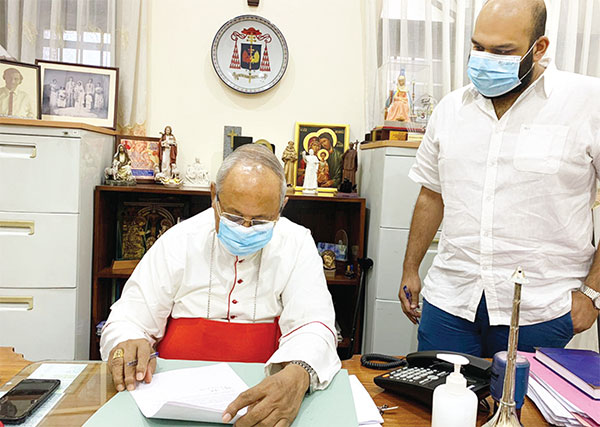
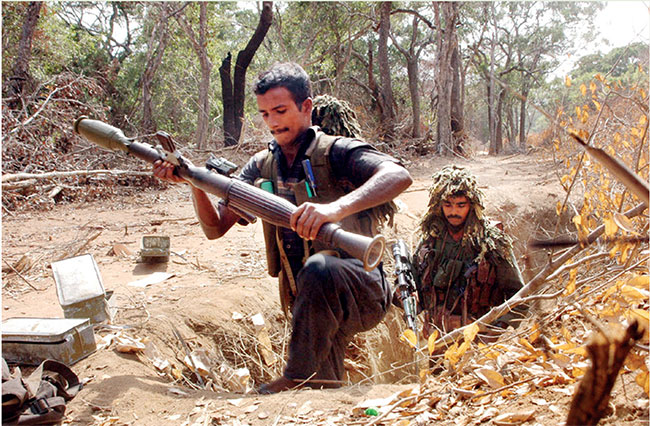
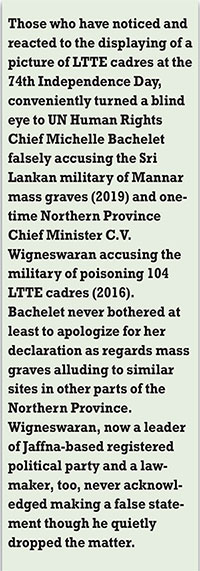 headline described the two men as LTTE commandos though the TamilNet report, headlined ‘Tigers locate 29 SLA bodies, 75 SLA killed, 100 wounded in Vanni’, posted online on Sept. 2, 2008, did not make any reference to LTTE commandos. There had been three other TamilNet reports, headlined ‘Fighting intensifies at Vannearikku’lam (Sept. 2, 2008), ‘LTTE confronts, recovers seven bodies (Sept. 2, 2008) and ‘Tigers seize a large number of SLA in Vanni clashes’ (Sept. 3, 2008). Those reports, too, didn’t make any reference to LTTE commandos. The reportage of the action along Nachchikudah-Vannearikku’lam-Akkarayan kulam line indicated that the LTTE believed the Army could have been overwhelmed.
headline described the two men as LTTE commandos though the TamilNet report, headlined ‘Tigers locate 29 SLA bodies, 75 SLA killed, 100 wounded in Vanni’, posted online on Sept. 2, 2008, did not make any reference to LTTE commandos. There had been three other TamilNet reports, headlined ‘Fighting intensifies at Vannearikku’lam (Sept. 2, 2008), ‘LTTE confronts, recovers seven bodies (Sept. 2, 2008) and ‘Tigers seize a large number of SLA in Vanni clashes’ (Sept. 3, 2008). Those reports, too, didn’t make any reference to LTTE commandos. The reportage of the action along Nachchikudah-Vannearikku’lam-Akkarayan kulam line indicated that the LTTE believed the Army could have been overwhelmed.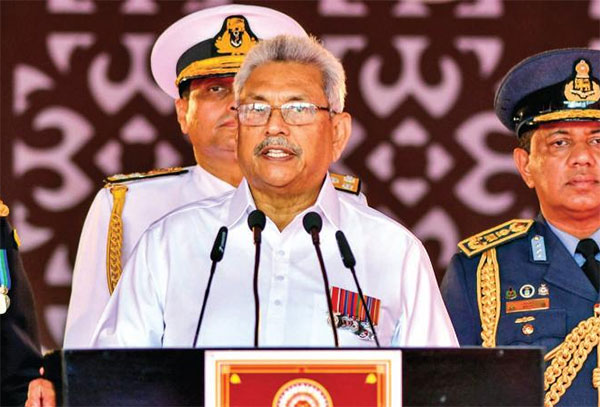
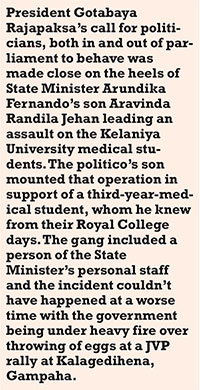 It would be pertinent to mention that Prof. de Silva, in mid-September 2021, quit the ambassadorial position that he received, courtesy the Sri Lanka Podujana Peramuna (SLPP) administration. Having presented the Letter of Credence to Myanmar President Win Myint on 01 Sept. 2020 at the Presidential palace in Nay Pyi Taw, Prof. de Silva served for a year. The outspoken academic returned home after having received treatment for Covid-19 infection.
It would be pertinent to mention that Prof. de Silva, in mid-September 2021, quit the ambassadorial position that he received, courtesy the Sri Lanka Podujana Peramuna (SLPP) administration. Having presented the Letter of Credence to Myanmar President Win Myint on 01 Sept. 2020 at the Presidential palace in Nay Pyi Taw, Prof. de Silva served for a year. The outspoken academic returned home after having received treatment for Covid-19 infection.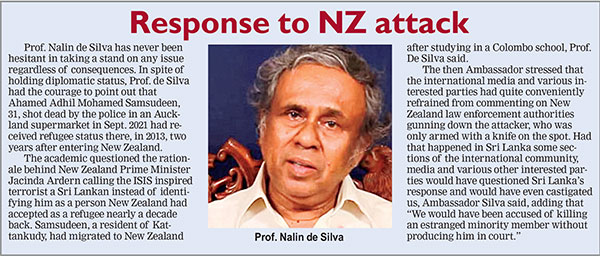 Even during his one year tenure as Sri Lanka’s top envoy in Myanmar, Prof. de Silva took a public stand on controversial issues. In January last year, just five months after taking over the Myanmar mission, Prof. Silva flayed India for its interference in Sri Lanka’s domestic affairs. In an open letter in Sinhala, also sent to The Island, Prof. de Silva questioned what he called Indian interventions in post-war Sri Lanka and a bid to exploit the Covid-19 pandemic.
Even during his one year tenure as Sri Lanka’s top envoy in Myanmar, Prof. de Silva took a public stand on controversial issues. In January last year, just five months after taking over the Myanmar mission, Prof. Silva flayed India for its interference in Sri Lanka’s domestic affairs. In an open letter in Sinhala, also sent to The Island, Prof. de Silva questioned what he called Indian interventions in post-war Sri Lanka and a bid to exploit the Covid-19 pandemic.